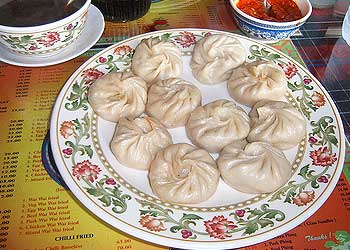Sikkim may be India’s second smallest and least populated state, but this Northern territory has more to offer than open space. Nestled in the Himalayan Mountains, there are adventures here aplenty. It was Lonely Planet’s number one destination of 2014 and if you read a little further, you will be able to see why.
The terrain is often treacherous but always beautiful. It is home to 28 mountain peaks, more than 80 glaciers, 227 high-altitude lakes, hot springs and more than 100 rivers and streams. At Tsongmo Lake, Buddhist monks prognosticate after studying and watching the colours of the lake that change with every season. Sikkim’s hot springs are also known for their healing and medicinal qualities.
If you like adrenaline packed afternoons, you can explore Sikkim via trekking through both jungle and alpine routes, cycling and mountain climbing. You can even see it from the back of a yak. You can go caving and hiking as almost 25% of the territory is covered by the Khangchendzonga National Park.
Come here during the winter and you can brave the slopes and ski or snowboard. Khangchendzonga is the world’s third highest mountain and if you do not fancy climbing, there are many motorbike trips too.
For flora and fauna, there are nearly 700 species of butterflies and around 5,000 species of flowering plants. In 2015, it even became India’s first organic state. Orchids, figs, laurel, bananas, sal trees and bamboo all grow in abundance here.
Sikkim food is unique in India because of its ties to both tribal cuisine and ancient Tibet. Rice features heavily in their cuisine, but here are a few lesser known favourites to feast on while you conquer Mount Khangchendzonga.
Momo
Momo is perhaps the most popular and common dish in Sikkim. It is prepared by stuffing minced meat, cheese or vegetables into dough and then making them into dumplings. These are then steamed and served with homemade chilli sauce, creating a dish rivalling that of even London’s best Indian brasseries!
Sishnu Soup
Perhaps the most interesting on this list, this soup is an exotic blend of edible wild nettles.
Chhurpi
Fermenting is a common culinary practice in Sikkim. Chhurpi is made using fermented cow milk, which adds a sour taste to dishes and is often included in soups and Ningro, a wild fern.
Sael Roti
Nepali in origin, this dish is prepared by grinding a mixture of rice and water into a paste. The paste is then poured into hot oil and deep fried, it is usually served with a potato curry at festivals and parties.
Bamboo shoots
Like other regions in Northern India, bamboo is used as both an ingredient and cooking utensil. Fresh bamboo shoots are called tama and is often served with pork in a curry. It is also fermented to make pickles called mesu.
Chang (thomba)
Of course, no trip to Sikkim is complete with sampling some rice or millet beer. Chang is made using fermenting millet and yeast and is served in a bamboo receptacle. Be careful though as it can be very potent!
